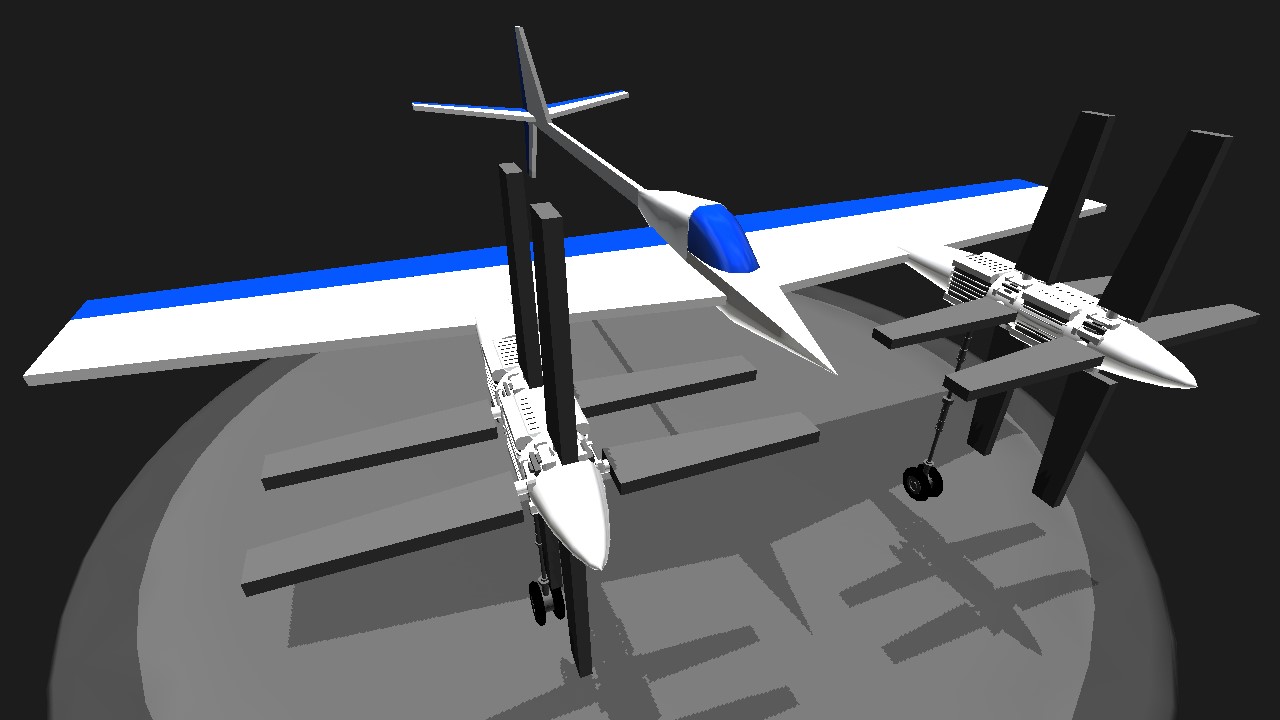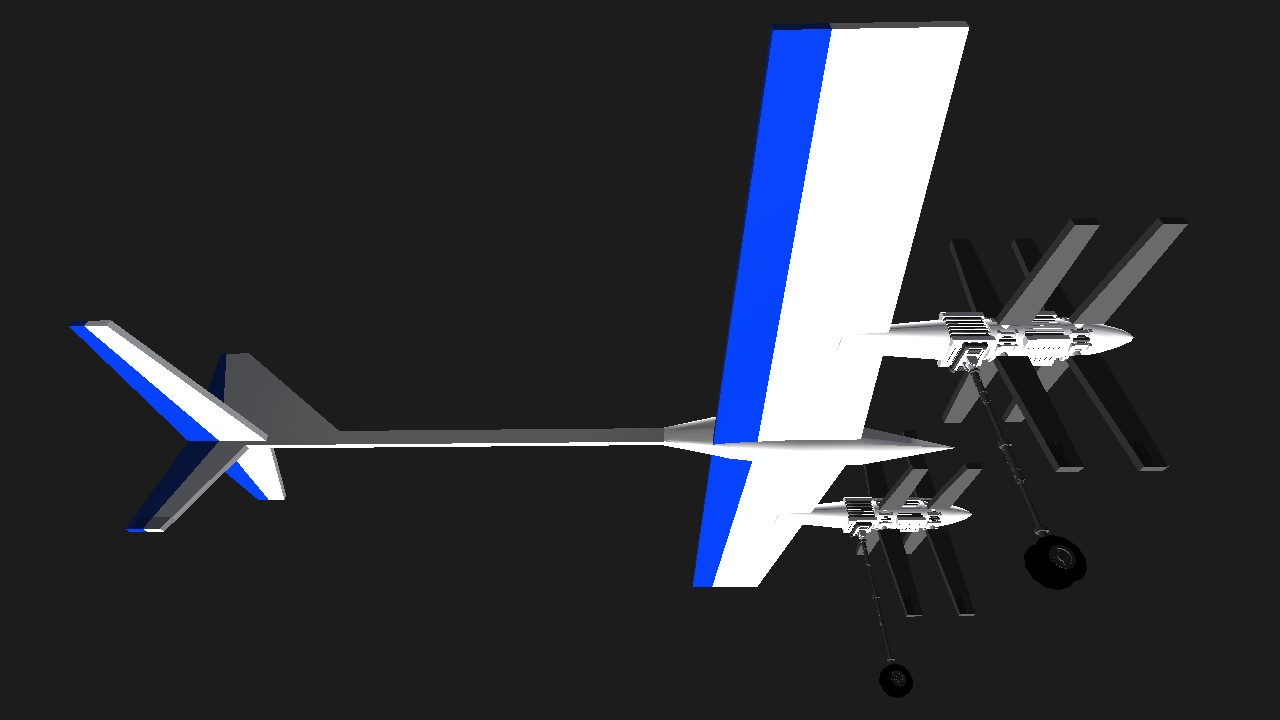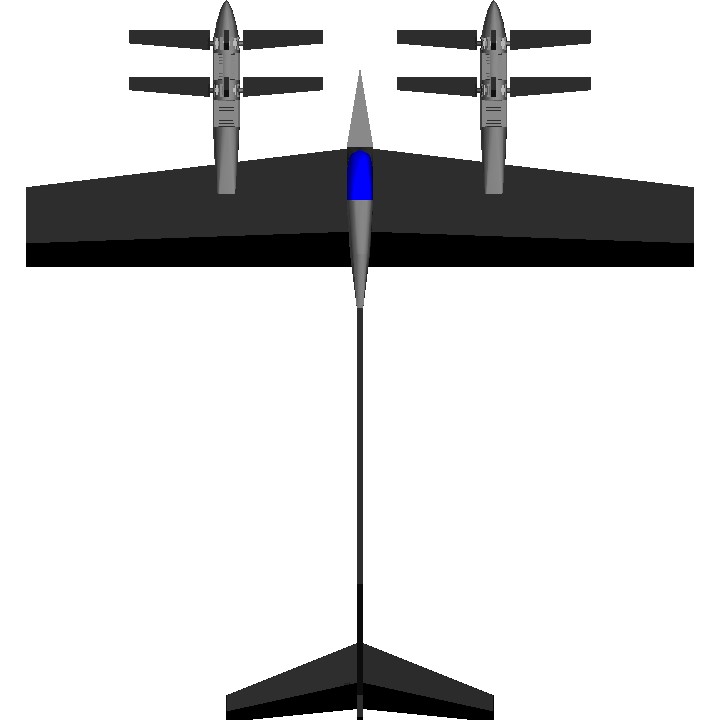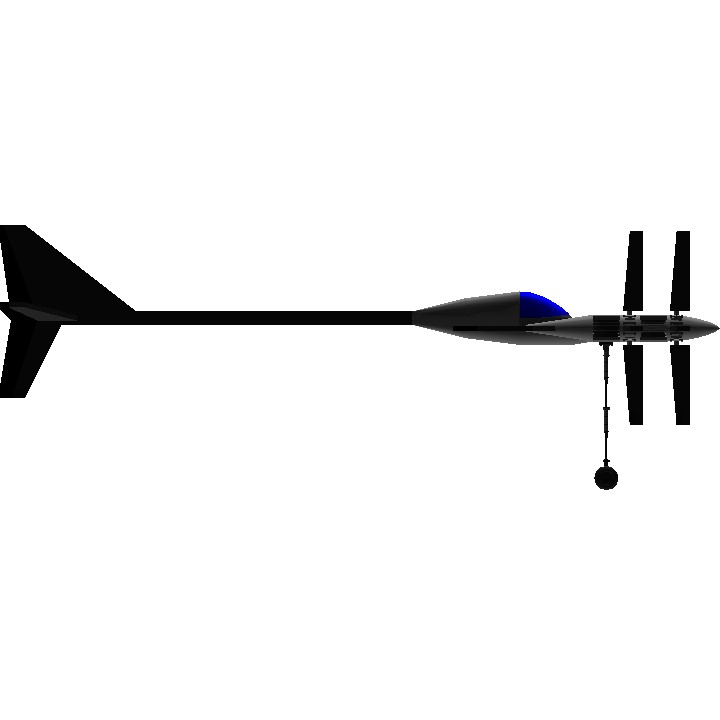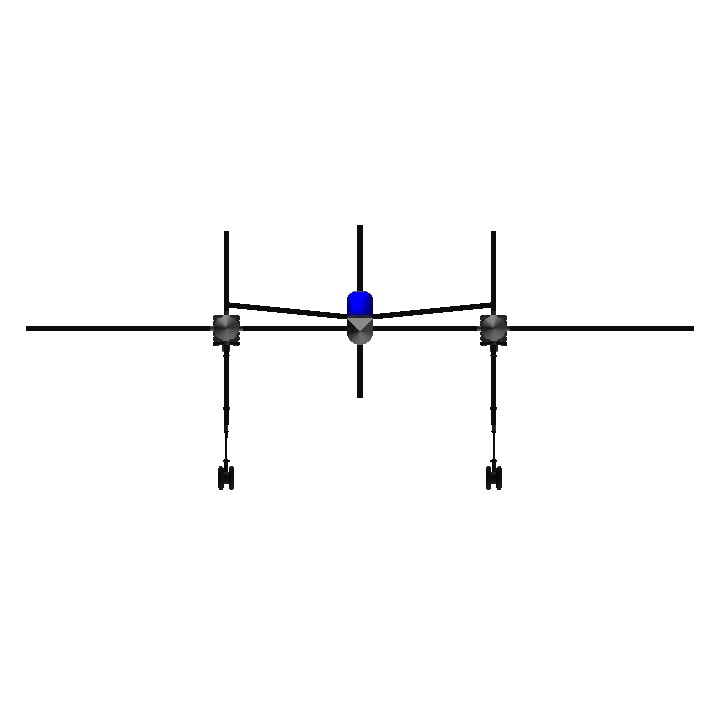An experimental aircraft to test propulsion via rotator-powered propellers in a counter-rotating twin-engine configuration. The rotators are XML-edited to spin very fast and for a very very long time. Top speed up to 560mph!
Flying this plane:
Throttle controls the propeller pitch. To start the engines, first push the throttle to 100%. Then, activate then deactivate Group 1. This should set the rotators spinning.
To fly, you'll be adjusting the propeller pitch to make the propellers provide thrust. From a rolling start, slowly decrease the throttle to increase the propeller pitch until you start to speed up. As you speed up, continue to reduce the throttle to maintain the thrust from the propellers as you travel faster through the air. However, too much or too little propeller pitch for the speed you're traveling at can result in losing speed.
Here is roughly the throttle values you should be using around each speed. Again, if you seem to be slowing down, just play with the throttle until you find the right propeller pitch.
~70% - 30mph
~50% - 70mph
~30% - 130mph
~15% - 200mph
~10% - 260mph
~5% - 300mph
~0% - 400mph
Flaps are controlled by VTOL. For takeoff, its recommended to use the flaps, since the wings have symmetric airfoils for reduced straight-line drag, in exchange for not producing lots of low-speed lift.
Overall it looks very cool, but it isn't much faster than a similar propeller plane with four engines in a conventional layout. The big torque forces from each rotator are hard to balance out, and they might be slowing down the propellers too. But hey, at least it works and looks nice!
Be careful if you use "Low" physics quality, or especially fast forward!
Specifications
General Characteristics
- Successors 1 airplane(s)
- Created On Android
- Wingspan 40.7ft (12.4m)
- Length 44.2ft (13.5m)
- Height 16.4ft (5.0m)
- Empty Weight 3,843lbs (1,743kg)
- Loaded Weight 3,843lbs (1,743kg)
Performance
- Wing Loading 8.7lbs/ft2 (42.7kg/m2)
- Wing Area 439.5ft2 (40.8m2)
- Drag Points 1089
Parts
- Number of Parts 64
- Control Surfaces 8
- Performance Cost 539

